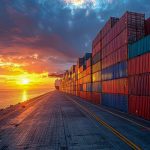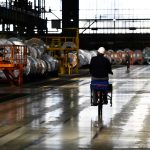
Decline in Iran-EU Trade in the First Two Months of 2025
28.04.2025
Foreign Investment in Germany Declines as China Overtakes the U.S.
15.05.2025EU Plan to Rescue Europe's Steel Industry
Starting next year, non-European producers of cement, aluminum, iron, and steel will have to pay a CO₂ tax at the EU’s borders when importing environmentally unfriendly goods.
Germany’s steel giant Thyssenkrupp plans to cut 11,000 jobs. Steelworkers across Europe are angry and worried about losing their livelihoods. The European metals industry is in crisis: U.S. tariffs, skyrocketing energy prices, global overcapacity, and competition from cheap Chinese steel are all taking a toll. Is there still a future for Europe’s heavy industry? The European Commission says yes.
Currently, global steel production far exceeds demand. Now, the new U.S. administration is threatening to impose 25% tariffs on steel and aluminum imports. This could redirect international trade flows from the U.S. to the European market. In response, the European Commission is trying to preserve what can be saved through a “Steel Action Plan.” It calls this strategy for industrial competitiveness and decarbonization the “Clean Industrial Deal.”
Foreign suppliers are attempting to flood the EU market with goods at dumping prices. To protect European producers from being wiped out by cheap, unfair imports, the EU will introduce a new tool in 2026: the Carbon Border Adjustment Mechanism (CBAM). Under this mechanism, non-EU producers of cement, aluminum, iron, and steel will be required to pay a CO₂ tax at the EU’s borders for environmentally harmful goods.
To prepare Europe’s industry for a sustainable future, the EU plans to attract €100 billion in investment. However, the industrial foundations of Europe remain at risk. Germany aims to become carbon-neutral by 2045—a goal achievable only if steel is produced using electricity or hydrogen instead of coal. The European Commission supports this transition, and Thyssenkrupp has also committed to the goal of “green steel.”
Source: Euronews
